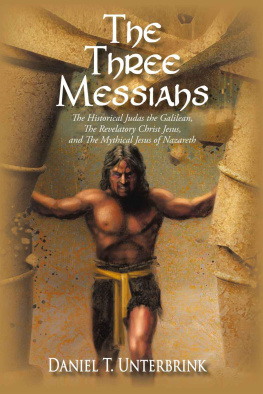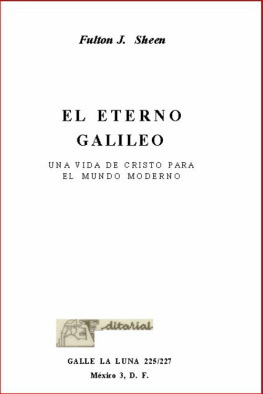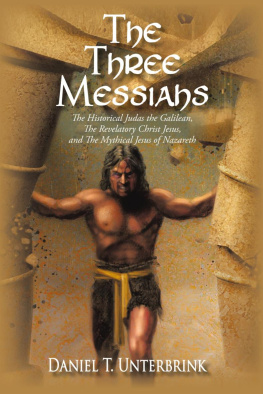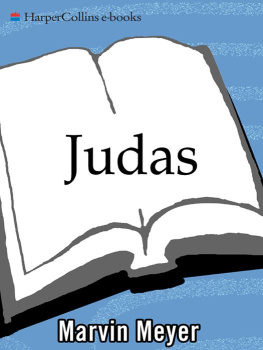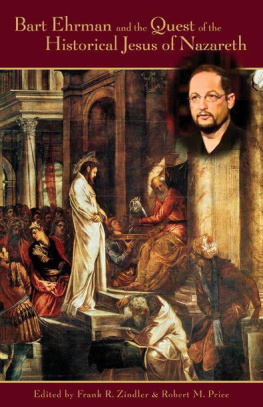The
Three Messiahs
The Historical Judas the Galilean, The Revelatory Christ Jesus, and The Mythical Jesus of Nazareth
Daniel T. Unterbrink
iUniverse, Inc.
New York Bloomington
The Three Messiahs
The Historical Judas the Galilean, The Revelatory Christ Jesus, and The Mythical Jesus of Nazareth
Copyright 2010 Daniel T. Unterbrink
All rights reserved. No part of this book may be used or reproduced by any means, graphic, electronic, or mechanical, including photocopying, recording, taping or by any information storage retrieval system without the written permission of the publisher except in the case of brief quotations embodied in critical articles and reviews.
iUniverse books may be ordered through booksellers or by contacting:
iUniverse
1663 Liberty Drive
Bloomington, IN 47403
www.iuniverse.com
1-800-Authors (1-800-288-4677)
Because of the dynamic nature of the Internet, any Web addresses or links contained in this book may have changed since publication and may no longer be valid. The views expressed in this work are solely those of the author and do not necessarily reflect the views of the publisher, and the publisher hereby disclaims any responsibility for them.
ISBN: 978-1-4502-5946-0 (pbk)
ISBN: 978-1-4502-5947-7 (ebk)
Printed in the United States of America
iUniverse rev. date: 9/15/2010
Contents
TIME MARKERS
THEUDAS AND JUDAS THE GALILEAN
JUDAS THE GALILEAN
THE SADDUC
THE STONING OF JAMES THE JUST
THE FOURTH PHILOSOPHY
PAUL, ACTS, AND JOSEPHUS
THE GOSPEL OF PAUL
JAMES AND PAUL
AGRIPPA I AND PAUL
CHRIST JESUS
TURNING JUDAS THE GALILEAN AND CHRIST JESUS INTO JESUS OF NAZARETH
FORTY SIMILARITIES BETWEEN JUDAS AND JESUS
ACTS - PROPAGANDA OF THE CHURCH
THE BIRTH OF JESUS
THE FAMILY OF JESUS
JESUS AND THE TWELVE
JESUS AND JOHN THE BAPTIST
EVENTS IN THE LIFE OF JESUS
OTHER PASSAGES OF INTEREST
JESUS OF NAZARETH A COMPOSITE
INTRODUCTION
Two radically different interpretations exist concerning the possibility of an historical Jesus of Nazareth: the traditional or Orthodox Christian story and the Mythicist explanation of that traditional story. The traditional viewpoint, held by all Christian denominations, claims that Jesus existed in the flesh, his life and death described accurately in the New Testament. By adhering to the New Testament story, Orthodox Christianity also must accept the scientifically impossible notions of bodily resurrection and miracles which suspend the laws of nature, along with contradictions which arise from comparing the Old Testament to the New Testament. A few questions must be asked concerning this viewpoint:
1. Can any living organism be dead for days and then be brought back to life? Whether we like to believe it or not, dead people, rotting in the grave, do not come back to life. There are no such things as vampires or resurrected human beings.
2. Can any man walk on water? This feat can only be accomplished in winter months. Jesus, like you and me, would have been swimming, not walking.
3. Can any man control the weather? Even the weathermen, with all their modern equipment, cannot accurately predict weather events more than a few days in advance. To control the weather is science fiction at best.
4. Can food be produced out of thin air or can we actually create matter? We can certainly rearrange matter, but this feat is far different than creating matter out of nothing. Jesus, the man, could not produce this miracle.
5. Can water be changed into wine? Without grapes and fermentation, this too would be impossible. In the Middle Ages, scientists tried to change objects into gold, with little luck. This story of Jesus surely cannot be taken literally.
6. Why would God condemn human sacrifice in the Old Testament yet sacrifice his only son in the New Testament? If God condemned humans for sacrificing their sons and daughters, then would not Gods sacrifice of his only son be a bit hypocritical?
7. Why would God need a human sacrifice in order to forgive sins if he already had the power to forgive sins? An all-powerful God does not need human or animal sacrifices in order to forgive sins. John the Baptist understood Gods forgiving power, preaching that the sinners needed to repent of their sins. With this repentance came forgiveness from God.
8. Why would God replace an Everlasting Covenant? Was it incorrectly termed Everlasting? This cannot be adequately explained by Orthodox Christianity. If God needed a New Covenant, then his Old Covenant must have been severely flawed. That would mean that God would not be perfect.
These questions, along with many others, have led some people to take a completely different approach to the existence of an historical Jesus. The second approach, represented by the Mythicists, denies the existence of an historical Jesus. Not only do the Mythicists see the futility in ignoring the obvious answers to the above questions, they also point to historical writings which do not mesh with the Gospel presentation of Jesus. Their conclusion: Jesus was a myth or possibly a composite of many historical figures. They do not see any one man as Jesus or the framework for this Jesus. Here is a list of items that these critics, the Mythicists, maintain in their opposition to a historical Jesus:
1. Since Jesus life was not mentioned by Josephus, Jesus was either totally immaterial to society or he failed to exist. (The one passage in Ant . 18.63-64 was an interpolation, as it clearly portrayed the later Churchs belief in Jesus, not the viewpoint of the cynical Josephus.) This omission of the Gospel Jesus by Josephus would be like compiling a list of the greatest basketball players and omitting Michael Jordan.
2. Paul may or may not have existed. If he did exist, he nevertheless did not champion the idea of a flesh and blood Jesus. He focused upon the Risen Christ. This, in and of itself, does not disprove an historical Jesus, but Pauls writings do little to support the Gospel Jesus.
3. The mention of James, the brother of Jesus, was an interpolation in Galatians, according to the Mythicists. If Jesus did not exist, they reason, he could not have had a brother. This is a circular argument. A James, the brother of Jesus, was mentioned by Paul and by Josephus. Instead of logically analyzing these passages, the Mythicists simply dismiss them as misinterpreted or interpolated.
4. The book of Acts also carried the story about James. This was merely to be consistent with the misinformation placed forward by the Pauline interpolation. However, the Mythicists do not explain why Acts presented a different James than the James of Paul or the James of Josephus. This would complicate their black and white scenario concerning James.
5. Consistent with 3 and 4 above, Josephus mention of James, the brother of Jesus ( Ant. 20.200), was really about James, the brother of Jesus, the son of Damneus ( Ant . 20.203). This Mythicist interpretation is necessary to remove James and Jesus from the pages of actual history. You see, if you are a Mythicist, then you cannot accept anything which suggests a real history concerning Jesus.
6. The expulsion of Christians under Claudius, as reported by Suetonius, was really not about Christians but about followers of Chrestus. Thus, the Mythicists claim that this incident did not really confirm that Christians existed at this time in history (41 CE). They do not realize that Suetonius stated that the Jews, who were followers of a Chrestus, were removed from Rome because of disturbances. Jews would not have followed a pagan Chrestus but would have followed a Messiah (Christ).
7. The persecution of Christians by Nero, after the Great Fire of Rome (64 CE), was not true, and that Tacitus record of this was invented by the later Church. Again, this is a circular argument. To the Mythicists, it is untrue because Jesus and Christians did not exist in the early and middle first century but were invented later.
Next page
